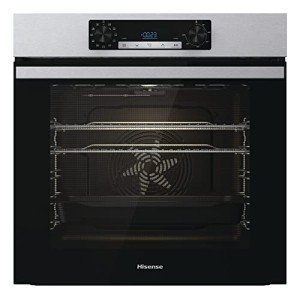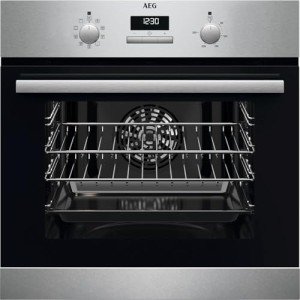Ten Single Fan Ovens That Really Improve Your Life
페이지 정보

본문
Understanding Single Fan Ovens: A Comprehensive Guide
Intro
As contemporary cooking areas grow significantly advanced, devices designed for performance and performance are at the forefront of customer interest. One such device that stays popular amongst home cooks and baking lovers is the single fan oven, an electric model understood for its adaptability and ease of usage. This short article offers in-depth info about single fan ovens, including their functionality, benefits, types, and considerations for purchase.
What is a Single Fan Oven?
A single fan oven, also called a stove, includes a single cooking chamber with a fan and exhaust system that flows hot air evenly throughout the cooking area. This results in an even cooking temperature level and boosted cooking efficiency compared to standard static ovens.
Secret Components of a Single Fan Oven
- Heating Elements: Usually located on top and bottom, these produce heat for cooking.
- Fan: The central feature that flows the hot air within the oven, promoting much faster and more even cooking.
- Thermostat: Regulates the temperature to guarantee ideal cooking conditions.
- Control Panel: Provides user interface alternatives for setting temperature levels, cooking times, and modes.
How Does a Single Fan Oven Work?
Single fan ovens operate by combining the heat from the heating elements with the air movement developed by the fan. The hot air is distributed uniformly around the food, substantially minimizing cooking time while also enabling lower cooking temperatures.
Benefits of Using a Single Fan Oven
- Faster Cooking Times: The distributing air permits food to prepare faster compared to standard ovens.
- Even Cooking: Food is exposed to consistent heat from all sides, lowering the possibilities of unequal cooking or hot spots.
- Flexibility: These ovens can be utilized for baking, roasting, and even barbecuing, making them appropriate for a large range of dishes.
- Energy Efficiency: By cooking at lower temperatures and in less time, these ovens might use less energy than their traditional counterparts.
- Moisture Retention: The design helps keep wetness in dishes, resulting in juicy roasts and baked goods with a light texture.
Kinds Of Single Fan Ovens
When considering a single fan oven, consumers might come across various types based on functions and style. Here are a couple of typical types:
1. Built-in Single Fan Ovens
- Description: Integrated into kitchen cabinets for a seamless appearance.
- Pros: Saves counter area, visually pleasing.
- Cons: Higher installation costs, might require expert assistance.
2. Freestanding Single Fan Ovens
- Description: Standalone units that can be placed anywhere in the kitchen.
- Pros: Easy to set up, versatile placement.
- Cons: Can take up more area, may not blend well with cabinetry.
3. Range Cookers with Fan Ovens
- Description: Multiple cooking choices, consisting of a fan oven, integrated in one system.
- Pros: Offers various cooking techniques, ideal for enthusiastic cooks.
- Cons: Generally more expensive, larger footprint.
Contrast Table of Single Fan Oven Types
| Type | Pros | Cons |
|---|---|---|
| Built-in | Space-saving, aesthetically pleasing | Greater expenses, expert installation required |
| Freestanding | Versatile placement | Takes up more space, might not match cabinets |
| Range Cooker | Multiple cooking methods | Higher price, larger size |
Picking the Right Single Fan Oven
When selecting a single fan oven, several factors must be considered to guarantee that it meets individual cooking requirements and fits within your kitchen design.
Elements to Consider
- Size and Capacity: The size ought to complement your kitchen design while offering adequate capacity for your cooking practices.
- Functions and Functions: Look for adjustable racks, self-cleaning options, and several cooking modes to boost versatility.
- Energy Efficiency: Check for energy ratings; some models are created to be especially energy-efficient.
- Spending plan: Costs can differ significantly, making it essential to develop a sensible budget in advance.
Maintenance Tips for Single Fan Ovens
- Routine Cleaning: Wipe down interior surface areas after usage to prevent residue accumulation.
- Inspect the Fan: Ensure the fan is free from blockages and functioning properly.
- Check Seals: Regularly check the door seals for wear and tear to maintain cooking efficiency.
- Expert Servicing: Schedule regular expert checks to make sure optimum operation.
FAQs about Single Fan Ovens
1. Can I use my single fan oven for baking?
Definitely! Single fan ovens are exceptional for baking, supplying consistent temperature levels vital for cakes, cookies, and breads.
2. Is it required to preheat a single fan oven?
While preheating is generally recommended for ideal results, due to the efficiency of a fan oven, some recipes may not require it.
3. Can I cook multiple meals at the same time?
Yes! The even heat circulation in single fan ovens permits you to bake or roast multiple dishes concurrently, using all rack levels efficiently.
4. Does a single fan oven cook quicker than a standard oven?
Yes, the fan-assisted heating lowers cooking times, allowing faster food preparation.

Single fan ovens offer a remarkable balance of speed, flexibility, and efficiency, making them a valuable addition to any kitchen. Whether for baking, roasting, or everyday cooking, these ovens make sure that home cooks can produce tasty meals with ease. By comprehending the advantages, types, and considerations for acquiring a single fan oven, customers can make an informed choice that aligns with their culinary desires and kitchen dynamics.
Embracing the functionalities of a single fan oven unquestionably leads the way for improved cooking experiences in the modern-day kitchen.

- 이전글What Is Tassimo Coffee Maker? History Of Tassimo Coffee Maker 25.06.17
- 다음글The 9 Things Your Parents Taught You About Affordable Rollator 25.06.17
댓글목록
등록된 댓글이 없습니다.